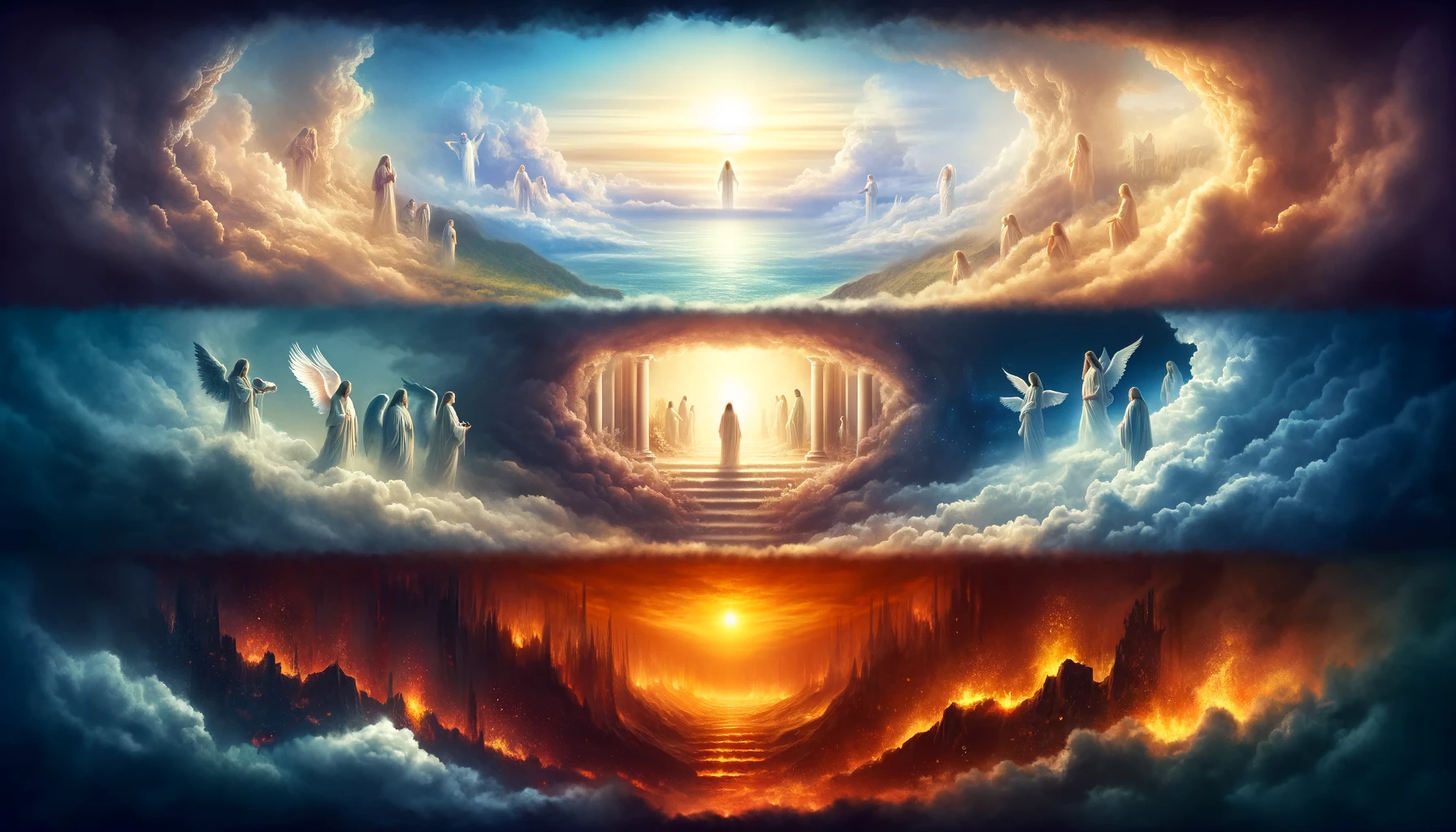The concepts of heaven, hell, and purgatory are central to Catholic eschatology—the part of theology concerned with death, judgment, and the final destiny of the soul. Understanding these doctrines is crucial for grasping the Catholic view of the afterlife, a view that offers both warning and hope, justice and mercy. This post aims to elucidate what Catholic doctrine really says about these three states of existence after death.
Heaven: Eternal Communion with God
Catholic teaching holds that heaven is the ultimate end and fulfillment of the deepest human longings, the state of supreme, definitive happiness. In heaven, the soul experiences perfect life with the Most Holy Trinity. This communion of life and love with the Trinity, with the Virgin Mary, the angels, and all the blessed is called the “Beatific Vision.” Seeing God face-to-face is not merely seeing with physical eyes but understanding and experiencing the fullness of God’s reality, love, and truth. Heaven is not static but a living, dynamic communion with God and all who are with Him.
Hell: Eternal Separation from God
Hell, in Catholic doctrine, represents the state of definitive self-exclusion from communion with God and the blessed. It is reserved for those who refuse to repent and accept God’s mercy, even at the moment of death. The chief punishment of hell is eternal separation from God, in whom alone man can possess the life and happiness for which he was created and to which he aspires. The existence of hell serves as a solemn warning to the freedom God has given to His created beings and the serious responsibility to use it in accordance with His will.
Purgatory: A State of Purification
Purgatory is unique to Catholic theology and often misunderstood by those outside the faith. It is a temporary state of purification for those who have died in God’s grace and friendship but are still imperfectly purified. The Church teaches that these souls cannot enter heaven yet and must be purified of their remaining sinfulness. Purgatory is not a place of punishment but a place of mercy—a cleansing fire that prepares souls for the Beatific Vision. The faithful on earth can assist these souls through prayers, Masses, and almsgiving.
The Communion of Saints: A Bridge Between Worlds
Central to the understanding of heaven, hell, and purgatory is the communion of saints. This doctrine articulates the profound bond between the faithful on earth (the Church Militant), the souls in purgatory (the Church Suffering), and the saints in heaven (the Church Triumphant). This communion highlights the Catholic teaching that all the faithful, dead and alive, are united in Christ and can intercede for one another.
Conclusion
The Catholic Church’s teachings on heaven, hell, and purgatory offer a comprehensive view of the human soul’s journey post-death. These doctrines emphasize God’s infinite justice and mercy—calling all to conversion and holiness in this life. Understanding these realities encourages the faithful to live in a way that reflects their ultimate destiny: union with God in eternal happiness or the tragic loss of that destiny through rejection of His love.
By contemplating these truths, Catholics are invited to deepen their relationship with God, striving for holiness and eager anticipation of the joy that awaits the faithful in the presence of God’s glory.


